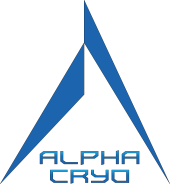What to expect:
You arrived at a simple office where the receptionist has us fill out a waiver form. You then basically stripped down naked, grabbed a white robe, gloves, socks and boots, put them on and headed to a room with what looks like a stand-up silver shower stall, which is a pretty small space. You step into this contraption they call the cryo-sauna where nitrogen is pumped into the chamber letting out freezing cold air (−110 °C) for a period of three minutes. It is really, really cold, but not like taking a dip in cold water. With cryotherapy you think the sensory receptors on my skin were impacted so quickly, your brain thinks you were freezing. It was as if the treatment was so cold it overrode the sensation of feeling chilled.
Because the session is over in 3 minutes, by the time you really start feeling icy, you get out of the chamber. Once you are out your body temperature almost immediately started to shift back to normal. You will noticed areas of your body where you have a little body fat (like the back of my arms, hips, thighs, and buttocks) felt cold to the touch longer than your belly, forearms, and other parts where your body is more lean.
The theory and science behind the method
After doing it your will want look for some research on the topic and found that it was originally used for the treatment of inflammatory rheumatic diseases like rheumatoid arthritis and ankylosing spondylarthritis and to alleviate inflammation and pain (Fricke 1989, Wichmann & Fricke 1997). It has more recently been used in sports medicine to treat injuries and syndromes of overuse (Zimmer & Zagrobelny, unpublished data, 2000). The performance-enhancing component of whole-body cryotherapy is also being increasingly used for sports. Once you are in the chamber your cardiovascular system changes, thus there are claims of lasting muscular effects (an increase in muscular perfusion, metabolism, and activation of motor units) and it’s why people believe it helps athletic performance (Papenfus 2006). Despite the possible health benefits of WBC, little scientific information is available in the literature I found overall. But it is an intriguing concept.
Although the gentleman at the spa said the main effect is to reduce joint pain and it was originally designed to help with arthritis, the research you will read says that for severe arthritis, you would have to do the treatment every 2-3 hours for multiple days to really create the effects of local cryotherapy. Think of it as cold-induced analgesia, a reduction in inflammation and a decrease of the temperature of the joint that could diminish the activity of collagenases, which are cartilage destroying enzymes (Harris & McCroskery 1974). Think of it like tricking your body into a self-preservation state like the body is about to go into hypothermia. When hypothermia occurs, a lot of blood is sent to your core region to protect your organs. Blood is then enriched with oxygen, nutrients, and enzymes and after you leaves the chamber super-rich nutrient blood returns to your extremities—flushing out toxins and improving circulation. The body loses heat by convection, radiation, conduction and evaporation, but I am not sure which of these WBC uses—perhaps all 5. You can imagine this is similar to how jumping into a cold plunge or ice water would stimulate the hypothalamus, causing a thermo-regulatory adjustment in the body. The receptors on the skin change their firing rate if temperature changes dramatically and very fast. So if skin temperature falls, the discharge rate of the skin receptors would increase quickly. That would cause cutaneous vasoconstriction.
The vasoconstrictor response reduces blood flow to the skin and hence reduces internal core-to-skin convective heat transfer and heat loss. Thus, the vasoconstrictor response to cold exposure protects the core temperature when skin and muscle temperatures are decreasing (Castellani et al. 2006).
So what’s my take?
You think to gain any real lasting affects you would have to go daily or multiple times a day. The cost of a treatment is $99 in for 3 Session. You can see why many of the avid users of this therapy are professional athletes. You will found out players from the Dallas Mavericks, San Antonio Spurs and Pittsburgh Steelers use the treatment, as have the Lakers’ Kobe Bryant and world-class sprinter Tyson Gay. You can bet the team just buys the machine and the players use it before and after training workouts.
You think if you had severe arthritis, joint pain, or nerve damage, maybe even frozen shoulder or something of that nature this type of therapy is a non-invasive possibility to reduce pain and increase the healing process. If insurance would pick up some of the cost, it could be a much better alternative than injections, surgery, or medication.
Your after-experience of the therapy will be a sense of coldness under my skin in the superficial fascia hours after the treatment so for sure something is affected by the therapy. Your cheeks feel more lifted, and you will notice the fatty regions of my body were cold to the touch longer than other parts of me.
Over all it is something that would be a great alternative to pain relief and help increase your energy not to mention is helps improve your sleep. You will sleep like a rock once you do cryotherapy which also an added bonus along with losing 600-800 calories.
